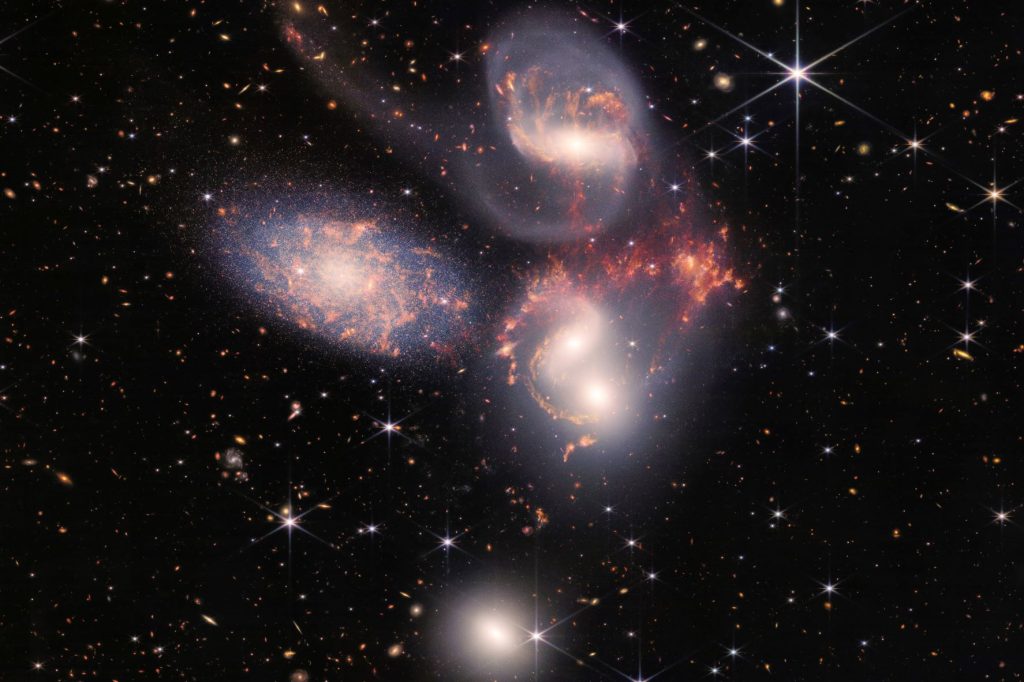An image of Stephan’s Quintet from the James Webb Telescope. Image courtesy of NASA, ESA, CSA, and STScI
LOGAN – Images emerging this summer from the James Webb Space Telescope are shedding new light on black holes, which are great amounts of matter packed into a very small area.
Utah State University’s Dr. Maria Rodriguez, a theoretical physicist who is very interested in these images, says there is a super-massive black hole in the center of our Milky Way Galaxy.
“We think every galaxy in the universe has this huge monster in the center,” says Rodriguez, “and this object in the center sort of balances this movement of the stars and this cosmic dance that we are doing around this super-massive black hole.”
She says the infrared light captured by the telescope measures the structures of the universe, when those structures were very new.
“For me, this is super exciting because I work on models for black holes, theoretical models of black holes, in solving Einstein’s theory of general relativity with black holes in them,” she adds. “In particular, it tells us how these black holes help in developing the universe and the galaxies.”
Dr. Rodriguez says she and her colleagues around the world are anxious to see how close their theories match with reality.
“The James Webb images will tell me, or help me, in thinking about whether the models that I developed with my colleagues are successful or could be used for this, and maybe we see new features we need to incorporate into this model.”
Rodriguez says black holes are flooding the universe, and some of them emit powerful jets and can collide to become bigger black objects.

